Table of Contents |
Author Disclaimer: Today’s key terms are being used strictly in a historical context, as these were terms that were used several hundred years ago. Today, they’re considered to be racist and harmful to those at whom they are directed. Note that this lesson uses these terms in a historical context only and in no way condones their usage today.
The artwork that you will be looking at today dates from the 18th century, which is when casta paintings were being created in Spain's New World colonies. This lesson focuses geographically on Mexico.
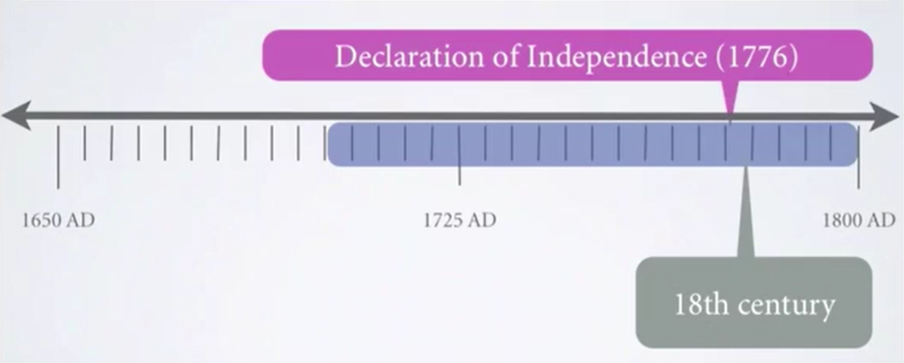
With the establishment of a New Spain far removed from the European continent, it was necessary to create a form of government to run the colonies while still answering to the Spanish kingdom. The viceroyalty of New Spain was established in 1535 and lasted until 1821. During this time, social stratification was employed by the Spanish as a way of maintaining order and limiting indigenous influence on the authority of the Spanish government and its control.
Stratification resulted in different castes, or castas, being established, that were dependent upon racial heritage. Casta paintings were a reflection of this stratification and illustrate how strong the influence was of perceived stereotypes of various racial combinations that existed throughout the colonies.
This caste system was based on racial hierarchy, and it became even more stratified with the 18th century Bourbon reforms under the Spanish kings Charles III and Charles IV. The reforms effectively limited the participation of non-Spanish people, or people of non-Spanish origin, in the government, as a way of strengthening the Spanish government's position in the New World.
Within the Spanish system of social stratification, there were four primary racial groups. Each of these casta paintings that you will be examining shows a particular combination of mother and father, and the resulting offspring.
Each title of the painting also refers to the parental combination and the resulting offspring, in perverse racial math, though it was perceived to be accurate for the time.
“De Mestizo y d’India, Coyote” essentially translates to: "Mestizo (a person of European and indigenous descent) and Indian (a native to Mesoamerica), begets a “Coyote,” who is the offspring of that union.
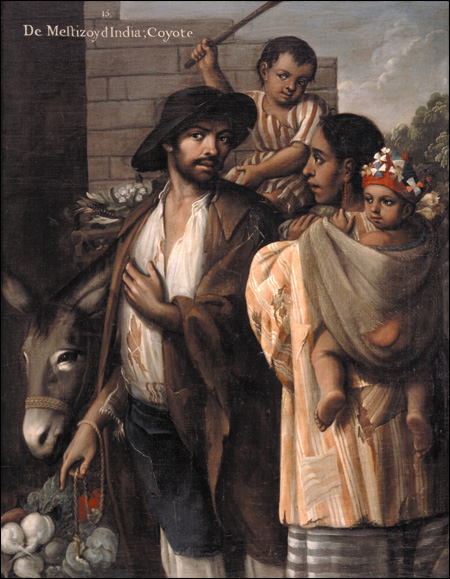
1763
Oil on canvas
This next image is titled “Las Castas,” which translates to “The Castes,” and serves as a sort of chart of racial pairings, as well as their place in society.
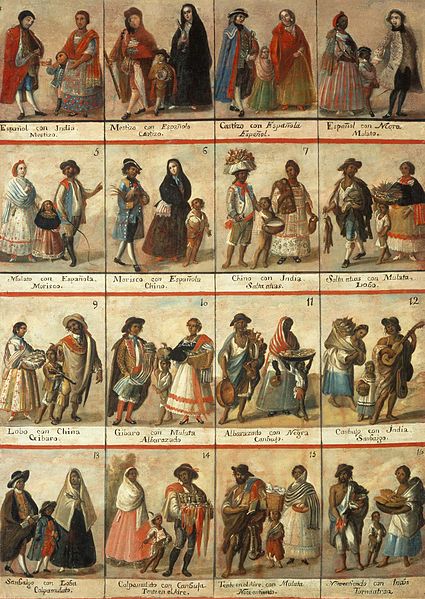
18th century
Oil on canvas
The next painting is the only one shown today by a known artist. It translates to “From Spaniard (otherwise known as a peninsular, or someone originally born in Spain) and Morisca, (who is a descendant of the Moors who converted to Christianity, begets) Albino,” who is basically a white child born from a Spaniard and Morisca.
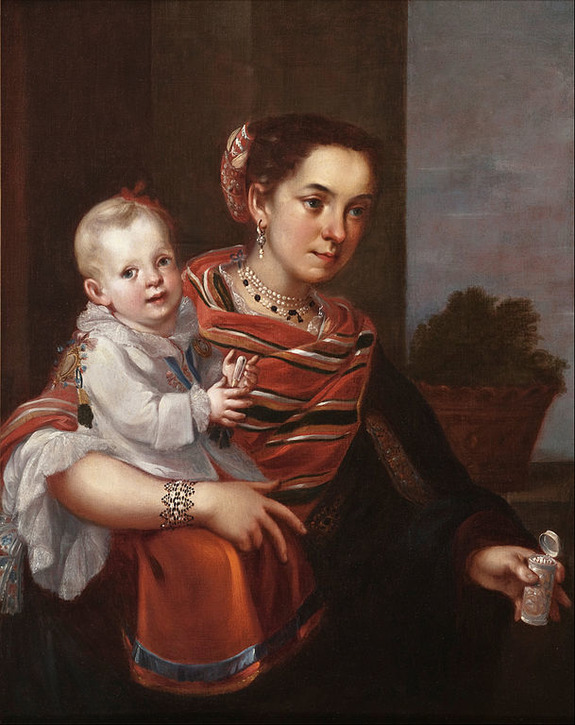
18th century
Oil on canvas
This final image is called “De Negro y Española, Sale Mulatto,” which essentially means, “From Black and Spanish, Begets a Mulatto.” It is an interesting depiction from after the aforementioned Bourbon reforms.
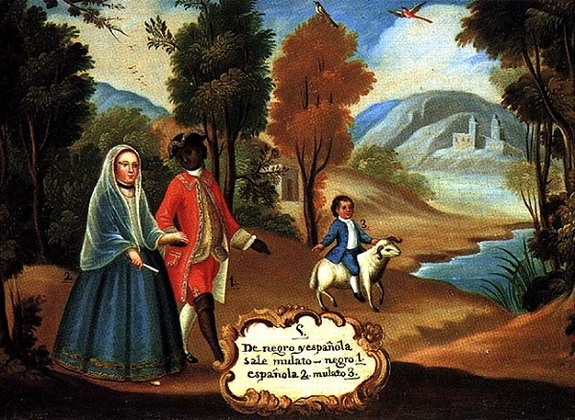
18th century
Oil on canvas
Note that although racist overtones exist, the family is dressed in European-style clothing, showing the influence of the Spanish government and the submission of the colonists to—at least in the eyes of the Spanish—the refinement of European culture. It’s another example of art reflecting the social behaviors of the time, and an unfortunate but important reminder of the human history of perceived racial superiority.
Source: This work is adapted from Sophia author Ian McConnell.